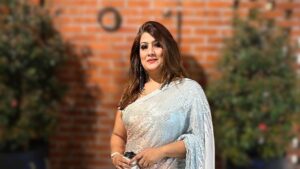
The role and importance of Foreign Direct Investment (FDI) in the economic development of any country is very important and when it comes to Bangladesh there’s perhaps no other sector which is as deserving of FDI as the garment and textile.
Accounting for majority of foreign earnings and providing mass employment, FDI is of paramount importance if Bangladesh RMG sector has to move up the value chain, produce high-end garments and increase productivity, so as to maintain its competitive edge and relevance in the world market, feel many experts.
Unfortunately though when the overall FDI in the country saw a 68 per cent rise to touch US $ 3.61 billion in 2018, FDI in the textile and apparel sector fell US $ 13 million with the sector receiving US $ 408 million overall in last year.
As per Bangladesh Bank (BB) data, last year the FDI in the sector declined by 3.24 per cent to US $ 408 million, from US $ 421.68 million in 2017, with Hong Kong being the largest investor (with an investment of US $ 83 million) followed by United Kingdom (US $ 43 million), China (US $ 40 million), South Korea (US $ 35 million), British Virgin Islands (US $ 33 million) and Bermuda (US $ 31 million).
This has the economists and experts delving deep to figure out the reasons and effect of the falling FDI in this sector.
“In increasing the export earnings and sustaining the current growth of exports, Bangladesh needs to increase production capacity and move to high-value goods to get better deals from foreign brands for its apparel items. To this end, the sector needs a huge amount of capital and skilled workforce where FDI can play an important role,” observed Khondaker Golam Moazzem, Research Director of Centre for Policy Dialogue (CPD), who felt FDIs should come in the backward linkage textile and high-end products as it will help transfer foreign and latest technologies to strengthen the industry.
However, there are a few catches towards attracting more FDIs in the sector it seems.
“Usually, apparel makers discourage FDI in basic product manufacturing as we have enough capacity in basic and medium segments,” explained ex-President of Bangladesh Knitwear Manufacturers and Exporters Association Mohammad Hatem, who went to add that despite this there is a significant scope of FDI towards producing high-end products like suit, lingerie, outwear, jacket and other fancy items.
It may be mentioned here that under the Bangladesh Export Processing Zones Authority (BEPZA) and Bangladesh Economic Zones Authority (BEZA), 100 per cent FDI is allowed in the textile and apparel sector but they discourage such investment for basic items.
“Since there is a gap between demand and supply of raw materials for the apparels, we need foreign investment in the primary textile, which needs huge investment,” underlined Mohammad Ali Kokhon, President of Bangladesh Textile Mills Association (BTMA) speaking to the media while underlining FDIs would be hard to come by unless the Government policy becomes favourable, production cost is reduced and prices of utility services including gas and electricity are made more affordable.
“In making investment in any country, investors seek security and return of their investment. Since the production cost is higher here due to rise in gas and electricity prices coupled with land scarcity, FDI is low,” Kokhon points out.
Businesspeople are, however, hopeful of increasing FDI as the Government is now providing investment facility in the Special Economic Zones (SEZ), which would prove beneficial for the sector more so with the trade war between USA and China out in open that has given Bangladesh scope enough to cash on.
“In the face of intensifying trade friction between the US and China, investors are fleeing China. They are investing in many Asian countries,” observed Policy Research Institute (PRI) Executive Director Ahsan H. Mansur, adding, “Bangladesh should attract the Chinese investment here.”







